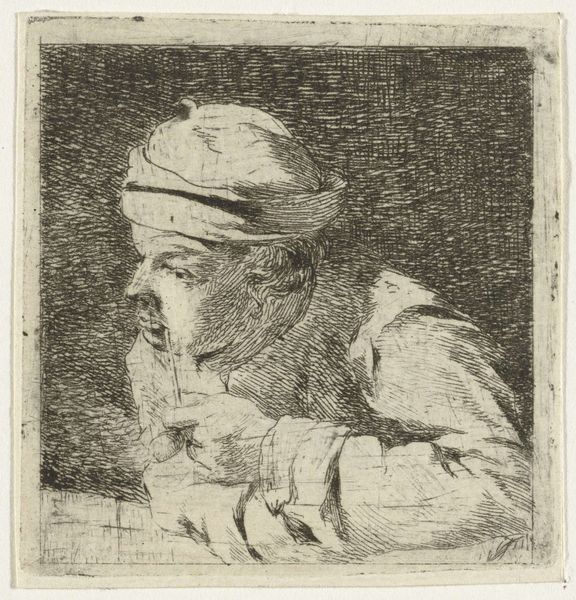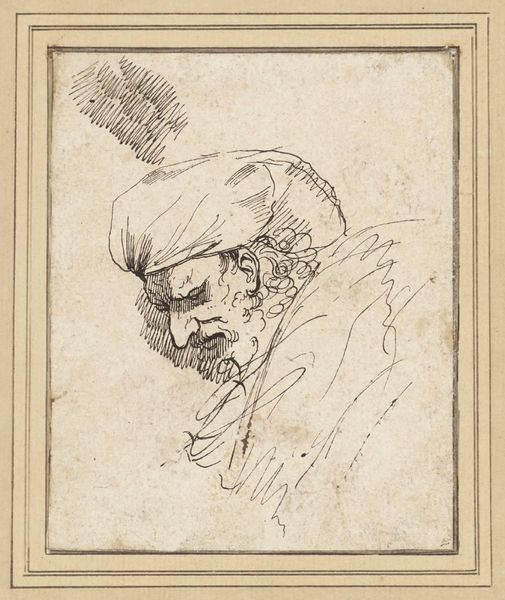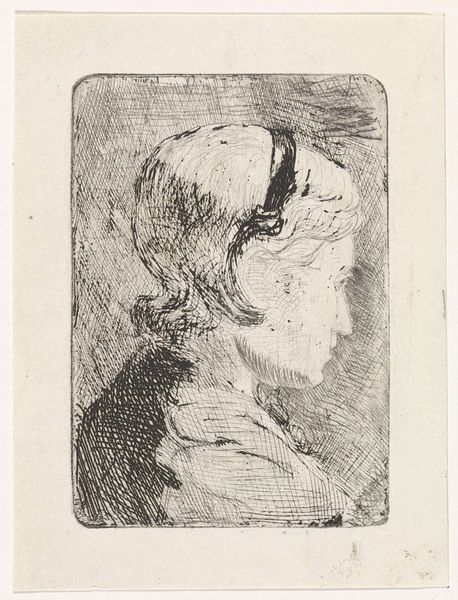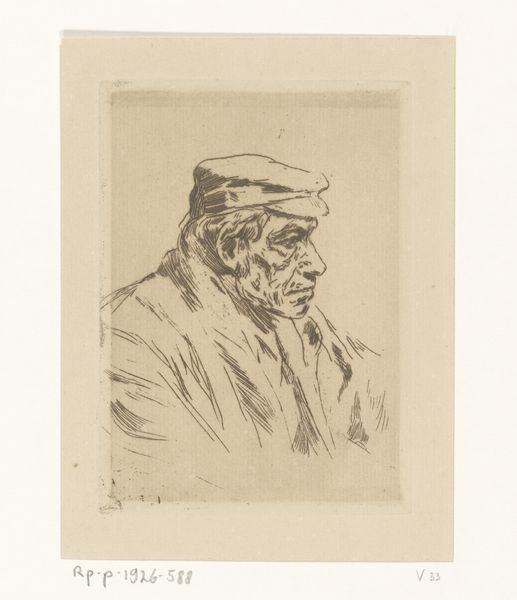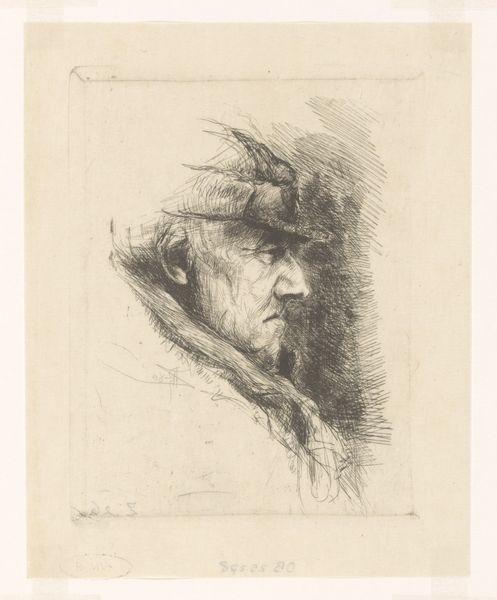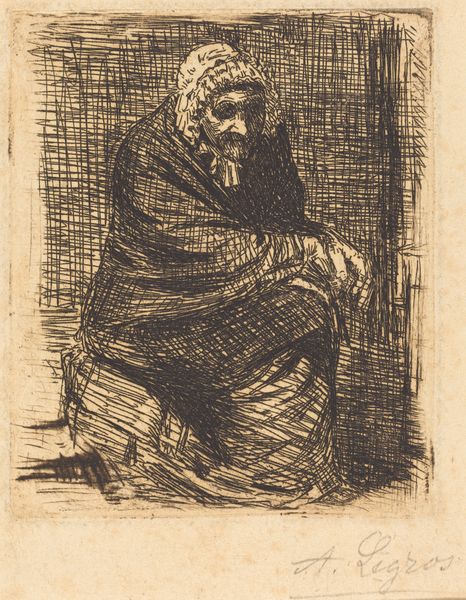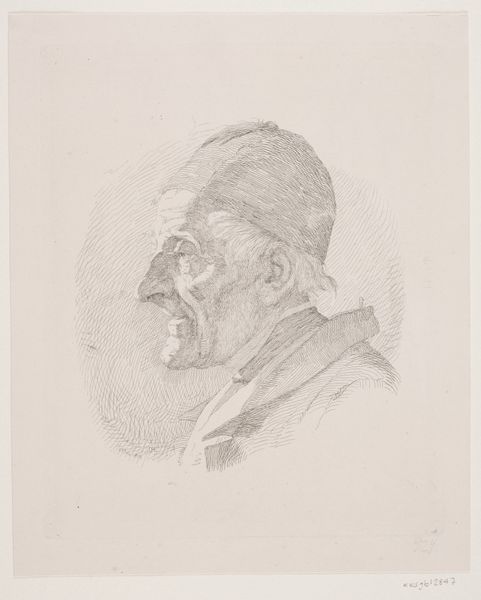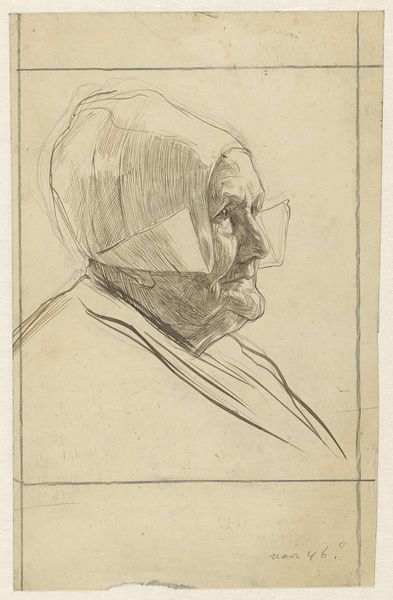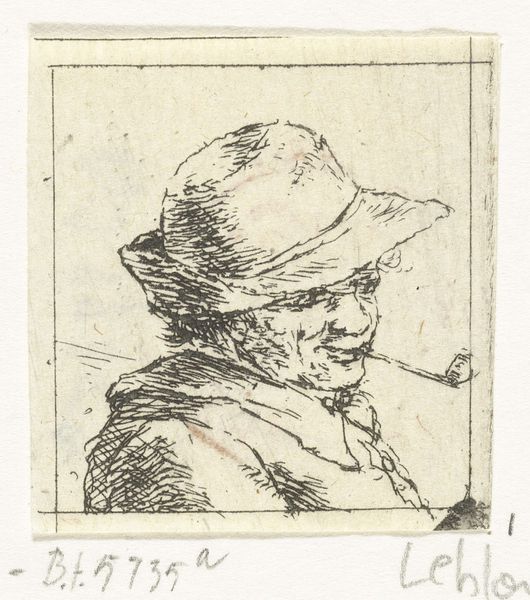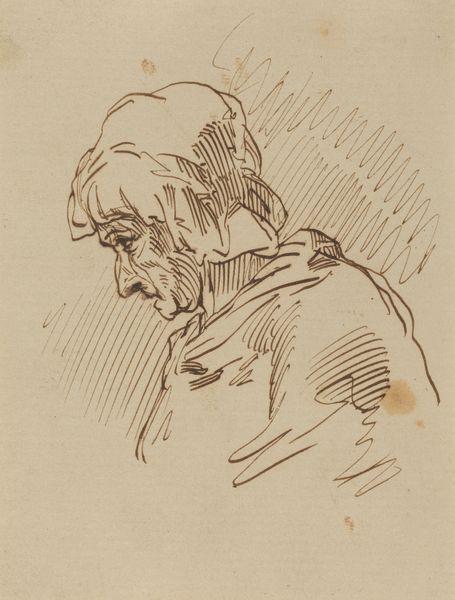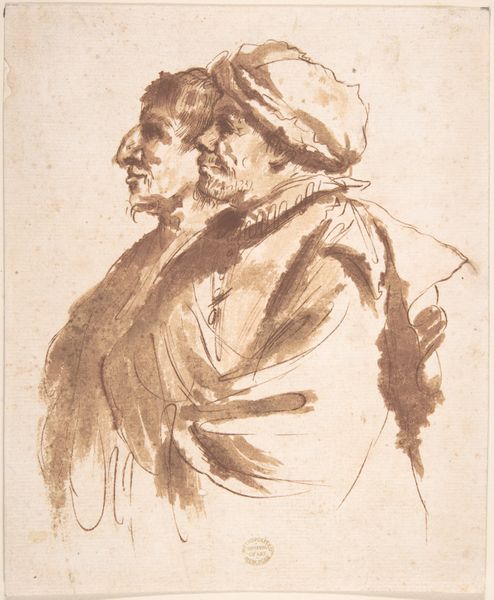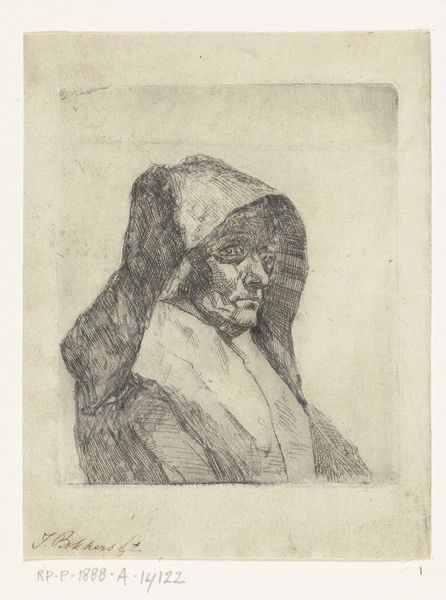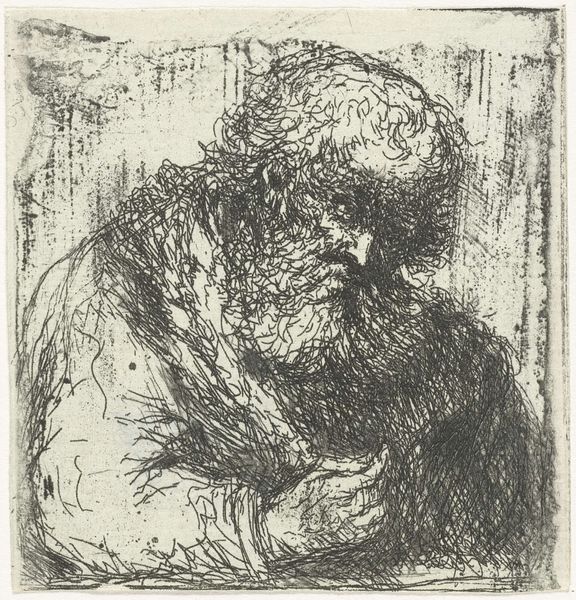
drawing, ink, pen
#
portrait
#
drawing
#
ink drawing
#
pen sketch
#
pencil sketch
#
figuration
#
ink
#
line
#
pen
#
realism
Dimensions: height 101 mm, width 90 mm
Copyright: Rijks Museum: Open Domain
Curator: Welcome. Before us hangs "Studieblad met mannenkop", or "Study Sheet with a Man's Head", a pen and ink drawing by Johan Philip van der Kellen, dating from 1841 to 1906 and housed right here at the Rijksmuseum. Editor: My first impression is one of starkness, a sort of visual record devoid of embellishment. The composition is centered, focused almost entirely on the subject's profile. The medium adds to that rawness—simply ink on what appears to be lightly prepared paper. Curator: Indeed, the spartan technique lends a penetrating immediacy to the piece. Van der Kellen presents more than just a physical likeness; it invites contemplation about aging and character etched by life's passage. His turned face may subtly evoke a common human experience, feeling witnessed while observing. Editor: I see what you mean. Semiotically speaking, we read the man’s downcast gaze, coupled with the minimal detail in the eyes themselves, as introspective, perhaps melancholic. And structurally, it's intriguing how the sketch-like quality contributes. The lack of solid form gives it all a quality of transient memory, like a portrait gradually fading into time. Curator: Precisely, the lack of detailed background pulls our focus to his wrinkles and lines as visual emblems that prompt introspection and elicit empathy. Van der Kellen emphasizes cultural archetypes embodied through his chosen subject rather than solely capturing physical appearance. Editor: And considering the materials themselves—ink, paper, pen— there's something almost inevitable about this stark, almost graphic depiction. It's as if the material limitations paradoxically opened space for intense psychological reading. A paradox inherent to portraiture's representational task. Curator: Yes, there's something universally familiar, making the artwork personally felt for any beholder across eras. The visible hand of the artist—a human sensibility captured despite elapsed time—fosters an experience with history embodied here on display. Editor: This experience speaks profoundly about what the medium permits—essential truth, perhaps—even though only suggested. The study exemplifies its ability through understated composition to unlock enduring contemplation about seeing self as it reflects through shared existence. Curator: Indeed. Perhaps reflecting such contemplation reveals further profound aspects connecting past observers too within art's ongoing resonance. Editor: Absolutely. These connections, after all, keep artwork vibrant through unfolding interpretations offered each renewed encounter it facilitates between art object, individual subject.
Comments
No comments
Be the first to comment and join the conversation on the ultimate creative platform.
